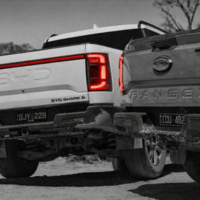The RedBook Insider: RedBook's New Marque Equity Index
In the automotive world, a brand’s value goes far beyond its logo. Consumer perceptions, resale values, and local market preferences all shape how much consumers are willing to pay. Understanding the interplay between brand and brand value and residual values is crucial for OEMs, banks, insurance companies, and many other industry stakeholders. By recognising this dynamic, stakeholders can better navigate market trends, adjust strategies, and optimize decision-making across the value chain.
What is the Marque Equity Index (MEI)?
At RedBook, we rely on data-driven insights to shed light on the actual influence of brand recognition on vehicle values. The Marque Equity Index (MEI) captures the "essence" of a brand's pricing power in the marketplace, clearly understanding how consumer perceptions and brand identities influence used vehicle prices. With so many factors influencing the market, it can be tough to clearly understand the value a particular vehicle offers in comparison to others.
RedBook’s Marque Equity Index tackles this challenge by using Australia’s most accurate vehicle valuations to deliver a clear, concise metric that reflects a brand's or vehicle's pricing strength.
A simple use case of MEI is comparing co-developed vehicles from different brands. Despite being built to similar specifications, vehicles from different manufacturers can exhibit varying resale values due to brand strength, consumer perception, and market positioning. A prime example of this is the Toyota 86 and Subaru BRZ, two vehicles that share much of their engineering but are marketed differently by their respective brands.
From a specification standpoint, the Toyota 86 and Subaru BRZ are nearly identical. However, when we look at the MEI data, there is a notable difference in their performance in the used car market. The Toyota 86 has an MEI of 9.8%, while the Subaru BRZ lags behind with an MEI of -2.1%. This 12-percentage gap that, all else being equal, the Toyota 86 will hold a significant premium in the used car market.
This example demonstrates how MEI can be leveraged to understand how brand perception can influence consumer behaviour, even when the products themselves are nearly indistinguishable in terms of specifications. By tracking MEI scores, our customers can gain a clearer picture of how brand strength affects the long-term value retention of vehicles in the market.

MEI is a valuable tool for used vehicle buyers and sellers to understand pricing trends, for automotive product planners to align new vehicle pricing with consumer perceptions, and for industry professionals to assess how brand image impacts or aligns with overall messaging and objectives. Backed by over 70 years of historical data and detailed insights from RedBook, MEI is an essential tool for tracking and managing the performance of all brands and segments in today’s market.
RedBook Marque Equity Index – Mainstream Brands
Here’s a look at the top and bottom five mainstream makes based on MEI, and the factors that may explain these rankings.
At the bottom end, brands like Chery, LDV, and GWM are ranked lower, indicating they are currently under pressure relative to their competitors. These brands face challenges such as limited consumer recognition, concerns around vehicle durability, and a lack of market presence. Their vehicles, while competitively priced, often struggle to maintain demand in the used-car market, which impacts their MEI score.
On the other hand, established names like Toyota, Suzuki, and Volkswagen perform strongly in the MEI rankings. These positive index values reflect strong resale demand, which is often driven by factors such as reliability, brand loyalty, and the perceived long-term value of their vehicles. Toyota, in particular, is the leader, with its vehicles maintaining strong market value over time, supported by a reputation for durability and consistent consumer demand.

The Marque Equity Index provides valuable insight into how brands are positioned in the used car market. While a negative index value suggests a challenge in terms of resale strength, a positive value reflects a brand's robust market presence and its vehicles' ability to retain value, reinforcing the critical role of consumer perception and brand reputation in shaping market dynamics.
With Toyota continuing to perform well in the market, other manufacturers should consider how their brands measure up to Australian consumers' expectations for reliability and resale value. For banks and insurers, these top brands might offer safer investment opportunities thanks to their strong reputation and market positioning.
Overall, the data highlights a dynamic market where established brands benefit from their long-standing reputation, while newer or less established players face a tougher battle to gain traction. These trends underline the importance of sustained consumer confidence and adaptability to market demands.
RedBook Marque Equity Index – Premium Brands
The Marque Equity Index for premium brands demonstrates the diverse factors shaping consumer perceptions and resale value in this segment. At the top, Ferrari and Lamborghini stand out with the highest scores, reflecting the timeless allure of their craftsmanship, heritage, and exclusivity. These brands not only hold their value exceptionally well but also benefit from strong global demand, limited production runs, and a dedicated customer base that prizes prestige and performance.
Porsche and Rolls-Royce also rank highly, demonstrating the value of consistent brand identity and quality. Porsche’s enduring reputation for combining luxury with sportiness, coupled with robust demand across multiple models, cements its position.
At the lower end of the premium spectrum, Maserati, CUPRA, and Tesla face challenges that are reflected in their lower MEI scores. Maserati, despite its rich history, may be struggling with a fragmented brand perception and a lack of differentiation in an increasingly competitive market. CUPRA, as a newer entrant, is still carving out its identity in the premium space, which may impact its ability to command high resale values.
Tesla presents an interesting case. While it leads the electric vehicle revolution and enjoys strong brand recognition, factors such as rapid technological advancements, evolving model lineups, and high initial depreciation weigh on its index score. The swift pace of innovation in EVs can make older models feel outdated, impacting their appeal in the used market.
For brands like Volvo and INEOS, their mid-range performance highlights the complexity of balancing innovation, reliability, and consumer trust in the premium segment.
These findings underscore critical considerations for automotive OEMs operating in the luxury market. Strong brand equity, a clear value proposition, and an unwavering focus on quality and exclusivity remain key drivers of success. Meanwhile, financial institutions and insurers can leverage this data to better assess risk and opportunity within the premium segment, identifying brands that offer stability and long-term value in a dynamic marketplace.
These trends underscore the premium segment's unique pressures, where exclusivity, innovation, and brand heritage are critical to maintaining value. The data highlights the importance of balancing aspirational appeal with tangible resale strength to sustain long-term market positioning.
RedBook Marque Equity Index – Segment View
The Marque Equity Index extends beyond brand-level analysis, offering insights at a VFACTs segment level to provide a more granular understanding of relative performance. By assessing individual models within their respective segments, MEI highlights the comparative strength of vehicles across categories such as small SUVs, light cars, or luxury sedans. This allows stakeholders to pinpoint the standout performers in each segment and uncover valuable trends shaping the marketplace. Whether evaluating consumer preferences or guiding product planning, MEI at the segment level delivers a sharper lens for analyzing the competitive landscape.
As an example, the SUV Light segment stands out for its blend of compact design and versatile functionality, appealing to urban drivers and those seeking efficient yet stylish vehicles. Within this competitive space, the MEI highlights clear distinctions in performance, offering a deeper understanding of consumer preferences and market dynamics.
At the top of the chart, Suzuki Jimny dominates with an impressive MEI of 43.0%, setting a high bar for the segment. Its enduring appeal lies in its iconic retro design and genuine off-road capability, a rare offering in this class. Limited supply has only amplified demand, ensuring its strong resale value and underscoring its cult status.
Toyota Yaris Cross, with an MEI of 21.5%, exemplifies Toyota’s ability to blend reliability with modern, practical design. This crossover strikes a balance between urban usability and the features buyers expect from an SUV, making it a go-to choice for those valuing durability and functionality.
The Suzuki Ignis follows closely with a 13.5% MEI, leveraging its quirky styling and affordability to maintain strong consumer interest. It captures a niche for buyers seeking something distinctive without breaking the bank, reinforcing its resale appeal.
Other notable performers include the Hyundai Venue (8.2%) and Mazda CX-3 (2.5%). Both models deliver on brand reputation and practicality, though their resale strength is tempered by fierce competition within this popular segment.
On the lower end of the spectrum, the Renault Captur (-13.4%) and Nissan Juke (-8.3%) struggle to match the resale value strength of their competitors. Challenges in consumer perception around reliability and a lack of standout features may be impacting their relative performance. Meanwhile, the Volkswagen T-Cross (-1.1%) shows promise but still lags slightly behind the top-tier performers in the segment.
These MEI results not only reflect the performance of individual models but also offer actionable insights for manufacturers. Models like the Suzuki Jimny and Toyota Yaris Cross demonstrate the importance of aligning design, functionality, and brand perception with consumer expectations to secure a strong resale value. For buyers, these metrics highlight the value retention of certain vehicles, offering clarity in an increasingly diverse market segment.
Segment View – Over Time
The SUV Light segment has experienced significant fluctuations in brand performance over the past five years, driven by evolving consumer preferences and competitive dynamics. The Marque Equity Index data highlights how certain models have successfully captured consumer demand, while others have faced challenges maintaining their foothold. Here’s an analysis of key trends within the segment.
The Jimny, a segment leader for much of the past five years, owes its success to its distinctive off-road appeal and niche following. However, its MEI has softened recently as increased supply enters the market, slightly reducing its exclusivity-driven premiums. The Toyota Yaris Cross, despite being a newer entrant, has quickly established itself as a strong performer largely driven by Toyota’s brand trust.
Mid-tier players, such as the Hyundai Venue and Suzuki Ignis, have shown moderate success, maintaining steady MEI values through affordability and compact utility. However, these models face increasing pressure from stronger competitors, with their growth plateauing in recent years. Meanwhile, legacy models like the Mazda CX-3 highlight the challenges of aging platforms and intensifying competition, as reflected in its declining MEI trend.
The lower-performing models, including the Volkswagen T-Cross, Renault Captur, and Nissan JUKE, show a consistent downward trajectory. These declines underscore the challenges of differentiating in a saturated market, particularly for brands with less established equity or polarizing designs. Negative MEIs across multiple years indicate persistent difficulty in sustaining consumer interest.

Looking Ahead: Australian Opportunities and Challenges
As we approach the close of 2024, it’s clear that brand perception and consumer loyalty will continue to drive vehicle pricing and brand value. With the rise of EVs, shifting market trends, and the enduring appeal of certain mainstream and premium brands, there are significant opportunities to refine strategies across OEMs, financial institutions, and other industry players.
To find out more or subscribe, get in touch with us via info@redbook.com.au as we continue to track the ever-evolving landscape of the Australian automotive market.
Recent Posts
-
 The RedBook Insider: 2025’s Brand Value Leaders Revealed: See Which Auto Brands Outpaced the Pack17th December 2025
The RedBook Insider: 2025’s Brand Value Leaders Revealed: See Which Auto Brands Outpaced the Pack17th December 2025 -
 The RedBook Insider: Drive Safer with 2025 UCSR Insights17th December 2025
The RedBook Insider: Drive Safer with 2025 UCSR Insights17th December 2025 -
 The RedBook Insider: RedBook Launches PredictRV Pro, Used Car Price Forecast17th December 2025
The RedBook Insider: RedBook Launches PredictRV Pro, Used Car Price Forecast17th December 2025
